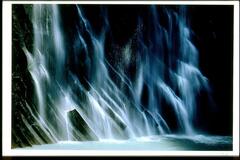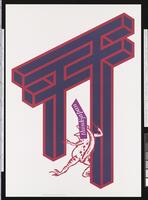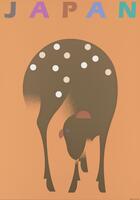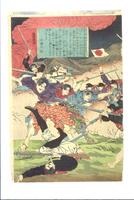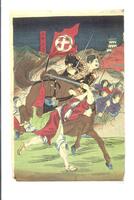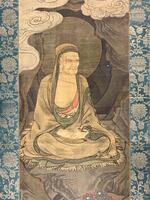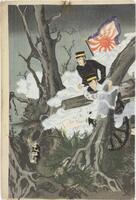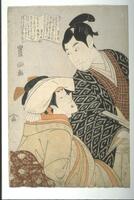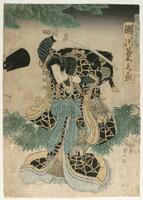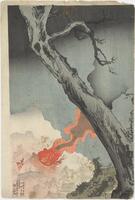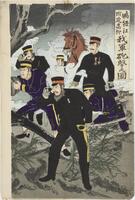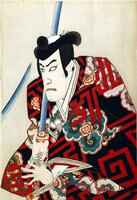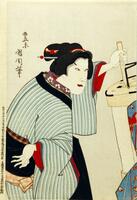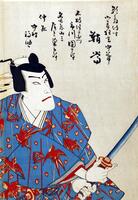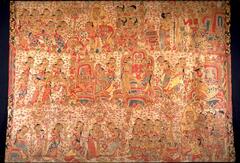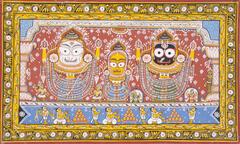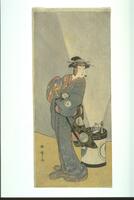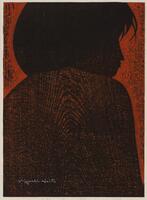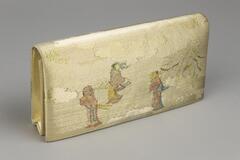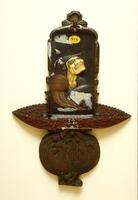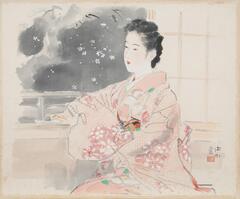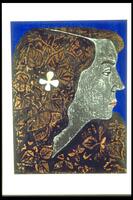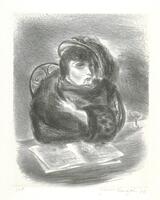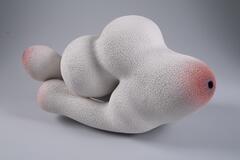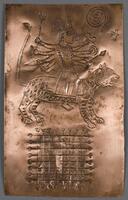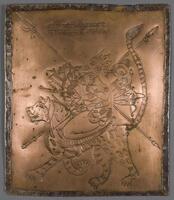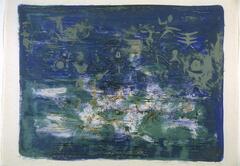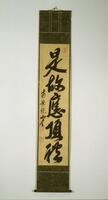37 Items in this Learning Collection
Copyright
Kimono
2013/2.477
Title
Kimono
Artist(s)
Japanese
Artist Nationality
Japanese (culture or style)
Object Creation Date
20th century
Medium & Support
silk, brocade
Dimensions
63 in. ( 160.02 cm )
Credit Line
Gift of Howard and Patricia Yamaguchi
Subject matter
This pattern, consisting of a series of miniscule white dots arranged in hill-like forms, is an especially popular motif for edo komon kimono. It was first developed in the Muromachi period (1336-1573) and was favored by samurai. Later, it was adopted by townspeople during the Edo period. “SAME” in Japanese translates as “shark”.
Edo Komon kimonos are a type of kimono that contains various motifs and tiny, elaborate designs dyed with pattern paper called “Ise-Kagagami.”
The inner lining includes eight different parts (hakkake) on the bottom and sleeve edges that gives the inner lining a more colorful appearance.
Physical Description
Splotchy mixed brown silk kimono with miniscule white dots (Sᾱme komon) with a white and pale salmon inner lining
Primary Object Classification
Costume and Costume Accessories
Primary Object Type
kimono
Collection Area
Asian
Rights
If you are interested in using an image for a publication, please visit http://umma.umich.edu/request-image for more information and to fill out the online Image Rights and Reproductions Request Form.
Keywords
Muromachi
kimonos
repeated motif
silk (silkworm material)
